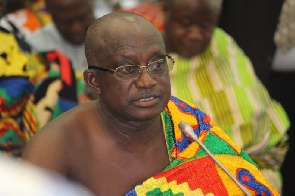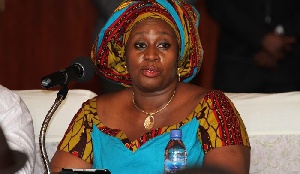Introduction
GENDER is an important feature of English grammar and usage. Indeed, knowledge of GENDER helps us maintain logic and avoid ambiguity in the construction of sentences, clauses, and phrases. Besides, GENDER provides the basis for enhancement of comprehension and avoidance of SEXIST LANGUAGE, a new concept in modern English usage. Discussion on gender reminds us of the phrase “female actress”, which was recently used by a leading newspaper in Ghana. There is no doubt that this and many other grammatically challenged gender-related constructions in Ghanaian media are enough to warrant a discourse on GRAMMATICAL GENDER.
Learning Outcomes
By the end of this discourse, fellow learners and readers should be able to understand:
• Gender
• Types of Gender
• Correct use of Gender in sentences.
Gender
Gender is a grammatical category in which a noun, a pronoun, and sometimes an adjective is masculine, feminine or neuter. Genders in English are comparatively simpler since they do not affect all the lexical categories. In French and Arabic, for example, gender affects almost all the Word Classes or Parts of Speech. As an illustration, the indefinite article “a” is used for both masculine and feminine nouns starting with consonants in English [a boy or a girl]. Contrarily, different indefinite articles are used for different genders in French. These are “un” for masculine and “une” for feminine. Examples in usage: UN gar?on – a boy, UNE fille – a girl.
Types of Gender
For the purpose of this discourse, three types of gender have been outlined: Generic Gender, Gender by Wording, and Gender by Form.
Generic Gender
This is a type of Gender in which the word involved can be used as either masculine or feminine. Nouns under this category are called Generic Nouns or Neuters. Most nouns in English are generic. Below are examples:
• cousin teenager teacher doctor
• cook student parent friend
• relation colleague partner leader
Examples in usage:
• Azindoo is a serious student. He is a serious student.
• Azinpaga is an intelligent student. She is an intelligent student.
It is possible to make the distinction by adding the words “male” or “female.”
For example:
• Kofi is male student, and Abena a female student.
Gender by wording: This refers to the gender shown in the structure of some words. Conventionally, almost all these words have different lexical structure for masculine and different lexical structure for feminine. Among them are as follows:
Masculine Feminine
man
father
uncle
boy
husband woman
mother
aunt
girl
wife
Gender by form: In this case, one word of unique semantic and grammatical properties is involved. However, the gender is determined by the form of the word. Generally, different forms of morphemes are added to the masculine gender to get the feminine one and vice versa in some cases. Examples are the following:
Masculine Feminine
Actor Actress
Hero Heroine
Waiter Waitress
Widower Widow
In adjectives, a classic example of gender types is “handsome” for masculine and “beautiful” for feminine. But sometimes any of the adjectives could be used for any of the genders for figurative effects.
It is important to state that advocates of gender equality are opposed to the gender by form. To them it amounts to what they call “Sexist Language”, which must not be accepted in modern usage.
Conclusion
It is instructive to emphasize that gender in English is simple, but it can be confusing when the user is not careful. Besides, it has come to light that the phrase “female actress” as mentioned earlier is ungrammatical, since the noun “actress” already contains semantic properties of “female” and belongs to the Gender by Form. Finally, it is significant to note that the words “male” and “female” may best precede generic nouns to indicate specific genders.
References
Biber, D., Conrad, S., & Leech, G. (2002). Longman student grammar of spoken and written English. Harlow: Pearson Education.
Greebaum, S. (1991). An introduction to English grammar. Harlow: Longman.
Huddleston, R., & Pullum, G. K. (2002). The Cambridge grammar of the English language. Cambridge: Cambridge University Press.
By Abubakar Mohammed Marzuq Azindoo, Coordinator of Students and University Relations, University of Applied Management (UAM), Germany – Ghana Campus, McCarthy Hill, Accra and Tamale
Email: azindoo200@gmail.com Tell: 0244755402












